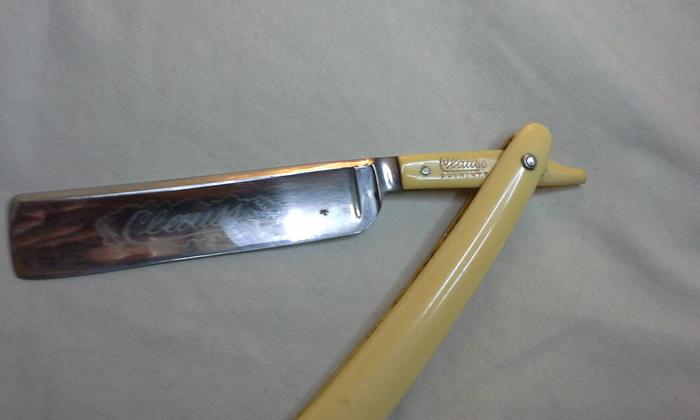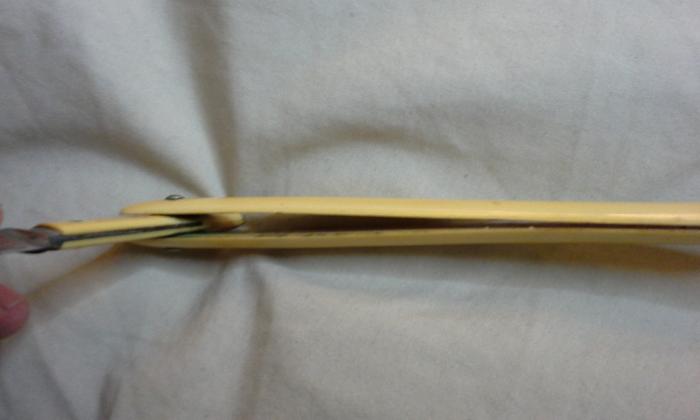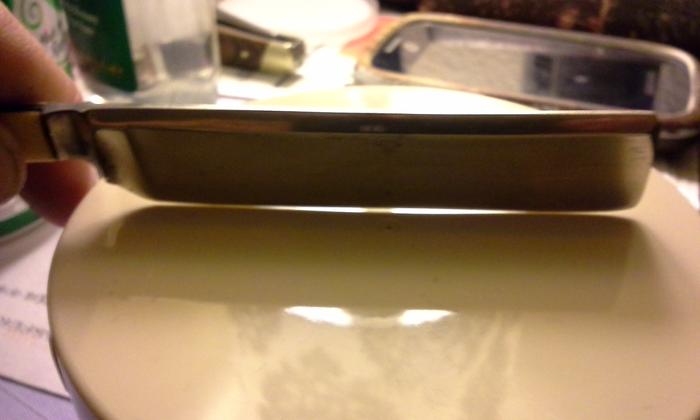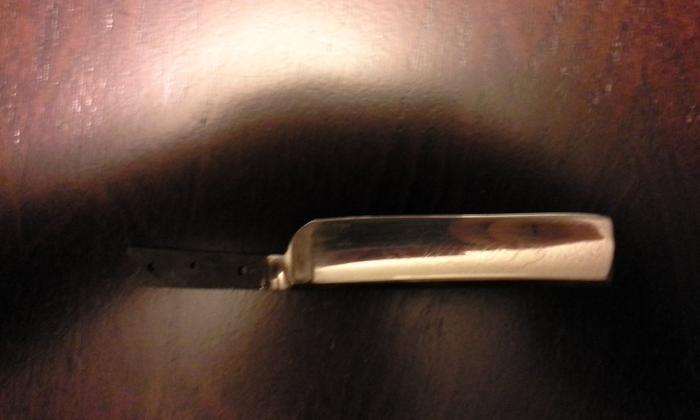Results 1 to 5 of 5
Thread: Clauss covered tang restore
-
03-09-2014, 02:06 AM #1
 Clauss covered tang restore
Clauss covered tang restore
I recently acquired this razor on eBay and was wondering if anyone here had made a tang cover. I plan on having the blade restored by someone more experienced but I have heavy woodworking background so I plan on making the scales myself.



 Sometimes I question my sanity, occasionally it replies.
Sometimes I question my sanity, occasionally it replies.
-
03-09-2014, 02:25 AM #2Senior Member


- Join Date
- Jan 2011
- Location
- Roseville,Kali
- Posts
- 10,432
Thanked: 2027
As long as you have what you removed, you should be able to replicate them in some sort of wood.
Whats wrong with the origenaalsCAUTION
Dangerous within 1 Mile
-
03-09-2014, 02:45 AM #3Senior Member


- Join Date
- Jun 2013
- Location
- Pompano Beach, FL
- Posts
- 4,047
Thanked: 636
From the pictures it looks like the tang is broken off. What are you going to do about the missing end of the tang?
-
03-09-2014, 02:57 AM #4

Most covered tangs are just that. Covered. Razors such as this have been made in ivory in the old days and in celluloid, later. The metal tang of the razor is a stub with which to attach, or mold on, a tang and cover assembly. Nice feature with no metal feel. No real way to fix unless draw some profiles now and melt the Cell off the blade with acetone. Attempt to duplicate in some metal/material.
Those which have a true tang which have been covered with material using pins are easier to re-do. At least I think so!
Never did it!
Last edited by sharptonn; 03-09-2014 at 03:00 AM.
"Don't be stubborn. You are missing out."
I rest my case.
-
03-09-2014, 04:52 AM #5

Actually the tang itself is not broke, the cover was snapped off well before the edge of the tang (see picture #2)
My plan was to affix the tang in a wooden block with an appropriately sized slot cut in it and then shape it with a carving knife, dremel and some sandpaper until the desired shape and thickness is reached and then make one piece scales out of the same wood.
The cover was held onto the tang with two separate pins and then the blade was affixed to the scales with a third pin. the rust underneath the cover was somewhat nominal, mostly surface rust and no pitting to speak of. the small rust spot on the blade is very shallow and i expect it to come out quite easily.
The original scales had some irreparable cell rot and nicks since the blade would not center correctly and I figured it would be hard to locate a celluloid blank so I decided on wood for the scales and tang cover. Will it be easy for a honemeister to fix the blade? The edge is not flat as you can see in picture #3 but there are no ripples, the cutting edge looks like it was attacked by someone with a piece of sandpaper but it should be repairable by someone with the correct stones. Less than 0.20mm needs to come off the edge, just enough to make the edge flat and get rid of the unevenness of the bevel.Sometimes I question my sanity, occasionally it replies.


 LinkBack URL
LinkBack URL About LinkBacks
About LinkBacks






 Reply With Quote
Reply With Quote
